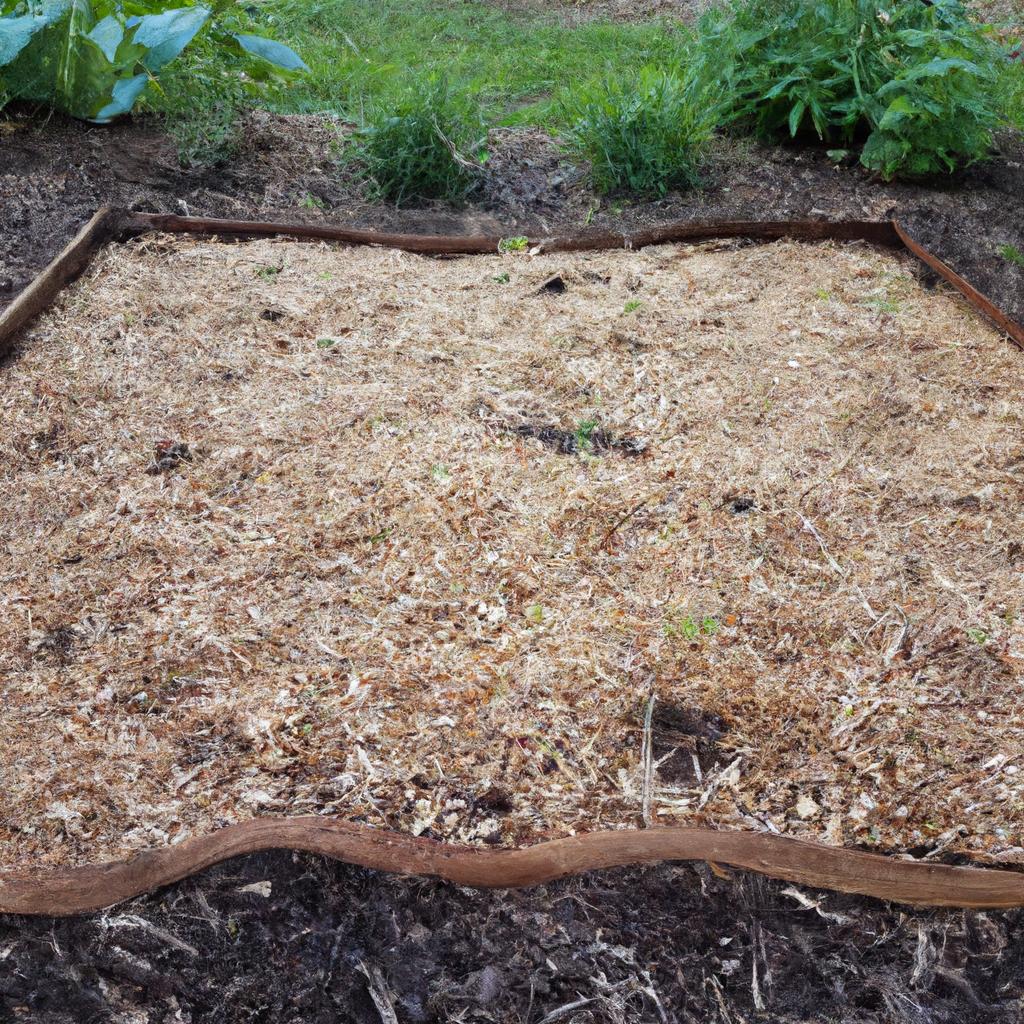Gardening is a fulfilling activity that requires consistent care and attention. To ensure your plants thrive, it’s crucial to prioritize soil health. A simple yet highly effective technique to promote soil health and provide numerous benefits to your plants is garden mulching. In this ultimate guide, we’ll explore different types of mulch, the benefits of garden mulching, how to apply it, and essential maintenance tips.
Types of Garden Mulch
Mulch is a material used to cover the soil around plants, protecting and enhancing soil health. There are two main types of garden mulch: organic and inorganic.
Organic Mulch
Organic mulch is made from natural materials like leaves, grass clippings, straw, wood chips, and bark. As these materials break down over time, they release essential nutrients, promoting healthy microbial activity. Organic mulch also helps retain moisture in the soil, suppress weed growth, and regulate soil temperature.
Inorganic Mulch
Inorganic mulch, on the other hand, is made from synthetic materials like plastic, rubber, and fabric. While it doesn’t break down like organic mulch, it provides excellent weed control and moisture retention. In areas prone to erosion from wind or water, inorganic mulch is particularly valuable as it stays in place and protects the soil. However, it doesn’t provide nutrients to the soil like organic mulch does.
Benefits of Garden Mulching
Garden mulching offers numerous benefits to soil health and plant growth. Here are some key advantages:
Retains Moisture
Mulch reduces evaporation and shields the soil from direct sunlight, helping it retain moisture. This is especially valuable in hot and dry climates where water conservation is crucial.
Suppresses Weed Growth
Mulch acts as a natural weed barrier by blocking sunlight, preventing weed germination and growth. Organic mulch can even release compounds that inhibit weed development.
Regulates Soil Temperature
By acting as an insulator, mulch regulates soil temperature, keeping it cooler in summer and warmer in winter. This is vital for plants with sensitive root systems that can be damaged by extreme temperatures.
Provides Nutrients to Soil
As organic mulch breaks down, it releases essential nutrients into the soil. This offers a natural and sustainable source of fertilizer, reducing the need for synthetic alternatives.
Prevents Erosion and Soil Compaction
Mulch protects the soil from erosion caused by heavy rain and wind. It also helps reduce soil compaction by creating a soft and porous surface, allowing water, air, and nutrients to penetrate the soil.
How to Apply Garden Mulching
To effectively apply garden mulch, follow these simple steps:
Determine the Right Amount of Mulch
The ideal mulch depth varies depending on the type of mulch and the plants you’re growing. Generally, a layer of 2-3 inches is sufficient for most plants. However, be careful not to over-mulch, as this can suffocate plant roots and cause other problems.
Prepare the Soil
Before applying mulch, remove any weeds or debris from the soil surface. Also, ensure that the soil is moist but not overly wet, as excessively wet soil can result in root rot.
Apply the Mulch Correctly
Spread the mulch evenly over the soil surface, making sure not to cover the base of the plant stems. Avoid placing mulch too close to the plant stems, as this can promote rot and disease. Additionally, regularly check the mulch depth and reapply as needed to maintain the desired thickness.
Maintenance of Garden Mulch
Once you’ve applied mulch to your garden, it’s essential to maintain it to ensure it continues to provide benefits to your plants. Here are some maintenance tips:
Regularly Check the Depth of Mulch
Over time, organic mulch breaks down and reduces in depth. Regularly check the mulch depth and add more as needed to maintain the recommended thickness.
Replace Mulch When Necessary
If you notice mold, fungus, or signs of decay on your mulch, it’s time to replace it. Remove the old mulch and replace it with fresh mulch to avoid any potential health issues for your plants.
Avoid Over-Mulching
While mulching is beneficial, overdoing it can have adverse effects on your plants. Excessive mulch can prevent water from reaching the soil, cause root rot, and attract pests and insects. Apply the recommended amount of mulch for your plants and avoid piling it up against the plant stems.
Conclusion
Garden mulching is a simple yet highly effective technique to promote soil health and enhance plant growth. By using organic or inorganic mulch, you can retain moisture, suppress weed growth, regulate soil temperature, provide essential nutrients to the soil, and prevent erosion and soil compaction. Remember to regularly maintain your garden mulch by checking the depth, replacing it when necessary, and avoiding over-mulching. So why not give garden mulching a try today? Create a healthy and thriving garden that will leave a lasting impression on your visitors and TooLacks readers alike. To learn more about TooLacks, visit TooLacks.



